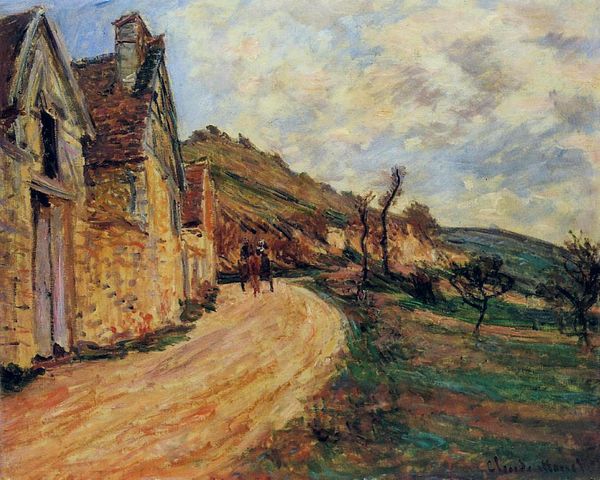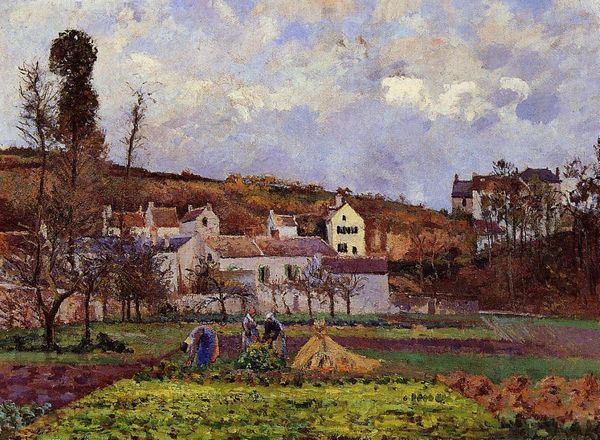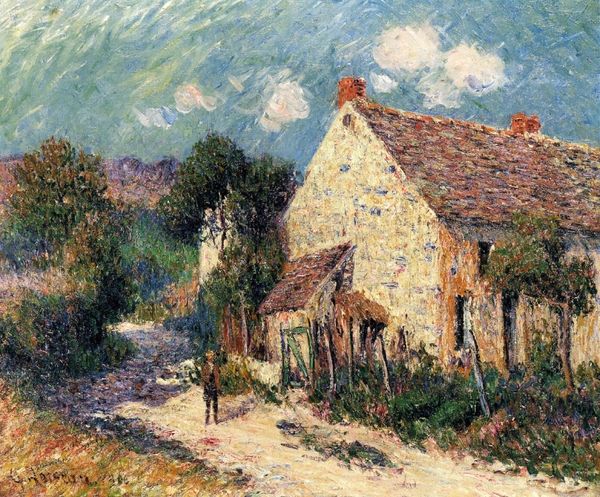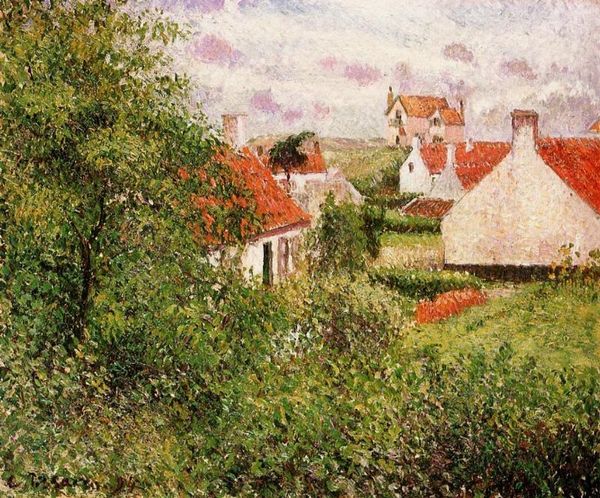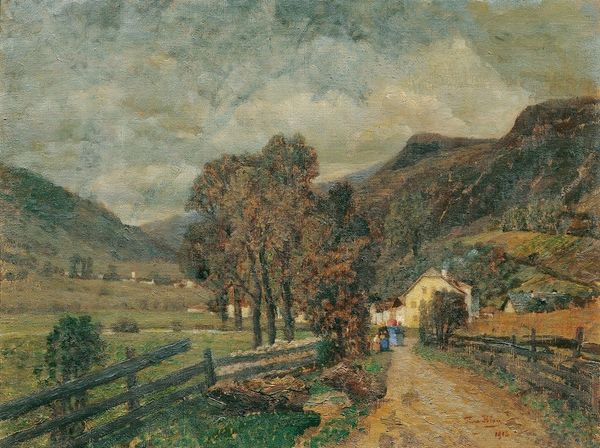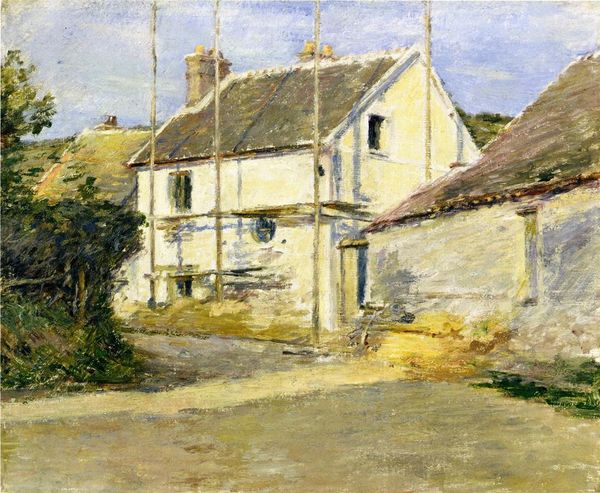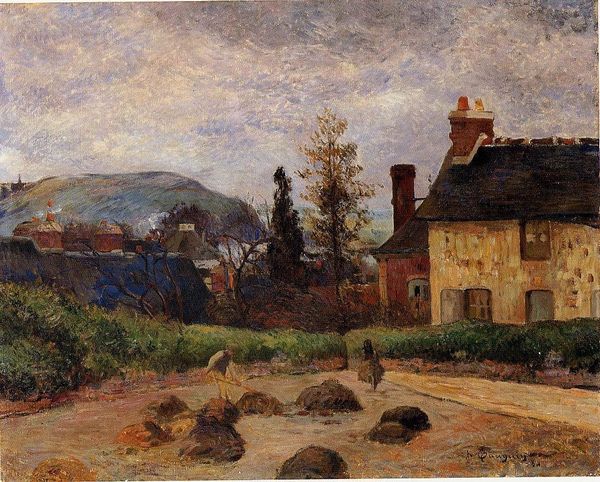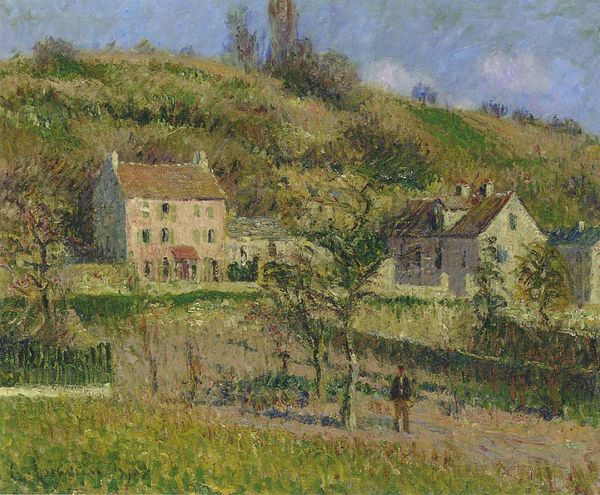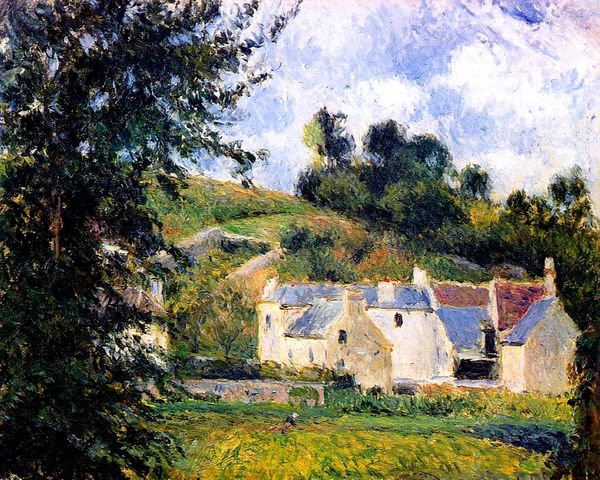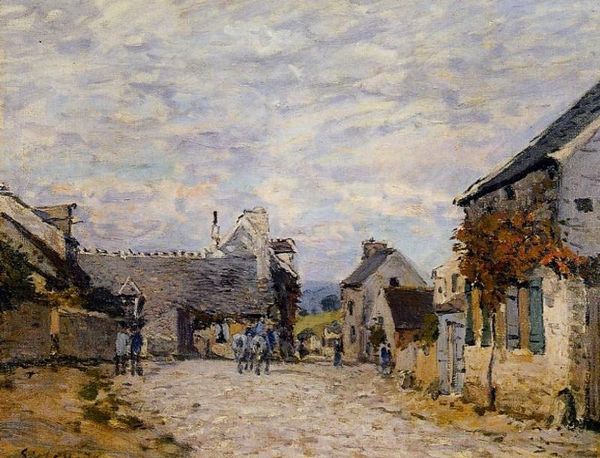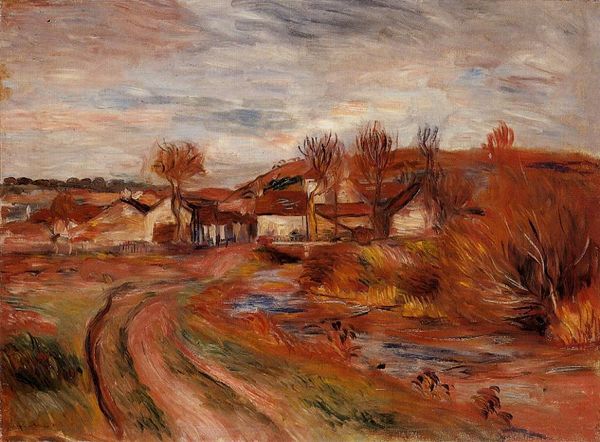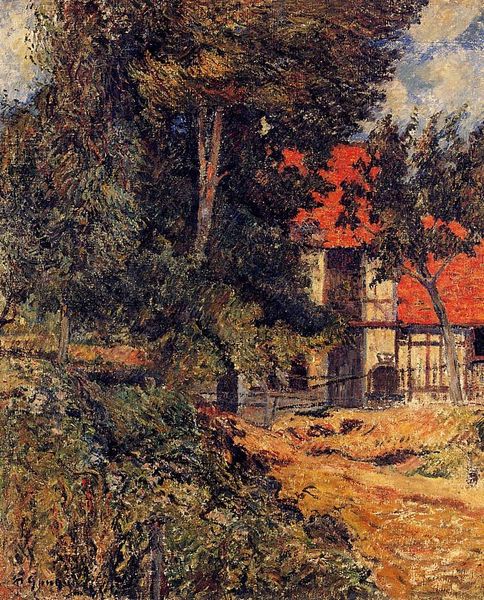
painting, plein-air, oil-paint
#
painting
#
impressionism
#
impressionist painting style
#
plein-air
#
oil-paint
#
landscape
#
impressionist landscape
#
oil painting
#
cityscape
Copyright: Public domain
Editor: This is Claude Monet's "The Hamlet of Chantemesie at the Foot of the Rock," painted around 1880 with oil. I’m immediately struck by how raw and textural it is; you can practically feel the coarseness of the stone buildings and the rough path. What’s your take on this painting? Curator: Well, looking at it through a materialist lens, it is fascinating to consider how Monet used paint to depict not just the appearance, but almost the very essence of those materials – the stone, the earth. Impressionism is often seen as a movement focused on light and fleeting moments, but here, he seems to be grounding it in something more… tactile. Editor: I see what you mean. It’s not just about capturing a pretty scene. So, what do you think Monet was trying to say about the materials and labor represented in this scene? Curator: Precisely! Consider the labor involved in quarrying and constructing these buildings, the impact of the elements on the landscape, and how that labour shaped the environment. The very application of the oil paint, thick and visible, mimics the layering of stone upon stone. Monet isn't just painting a village, he is documenting a landscape reshaped by human effort, where natural resources have been converted into commodities and shelter. What do you make of the brushstrokes themselves? Editor: They’re pretty frantic, or dynamic at least! Implying a fleeting encounter between painter and landscape, maybe, but I can also see how you might say it represents physical work… Curator: It suggests the swift, efficient labor needed to complete plein air paintings. Furthermore, by presenting these working conditions to the salon, Monet is actively elevating labor and its social context for observation. How does thinking about it that way change how you see the composition? Editor: That makes a lot of sense! I’m seeing now a contrast between the permanence of the structures and the fleeting, almost transient, application of the paint. As if to hint at what parts last. Curator: Exactly! It highlights the ongoing negotiation between nature and industry, a relationship deeply embedded in material culture. Editor: Well, I didn’t expect to think so much about manual labor and stone when looking at a Monet! This has definitely expanded my perspective.
Comments
No comments
Be the first to comment and join the conversation on the ultimate creative platform.
